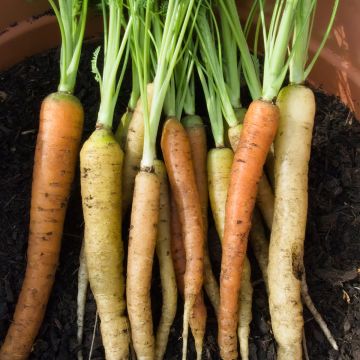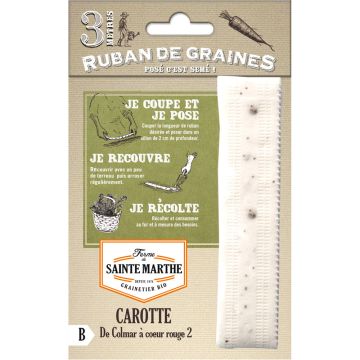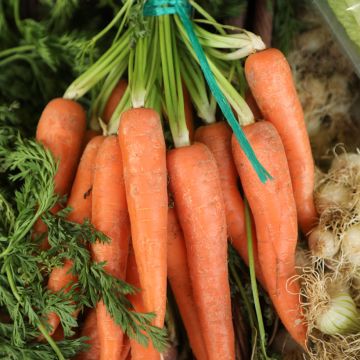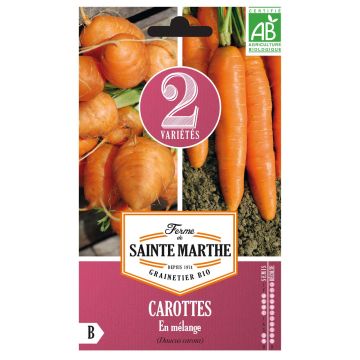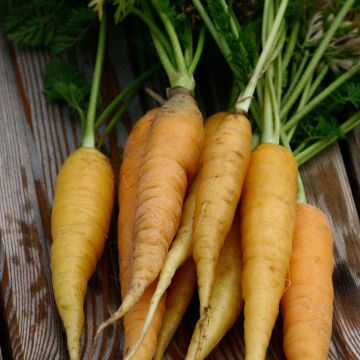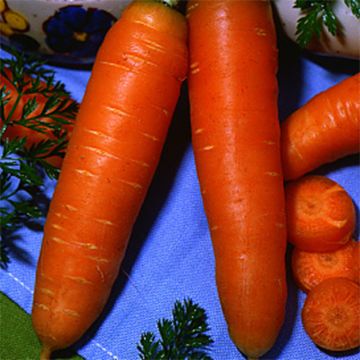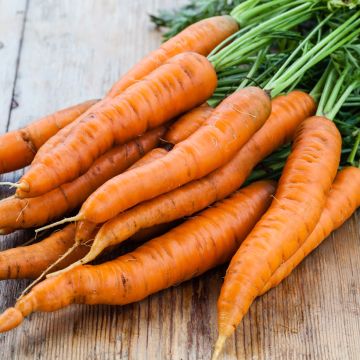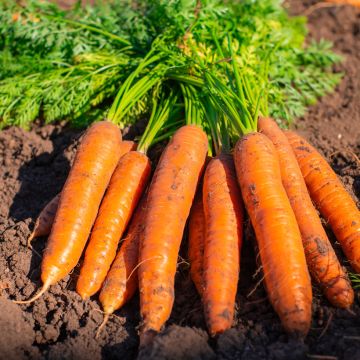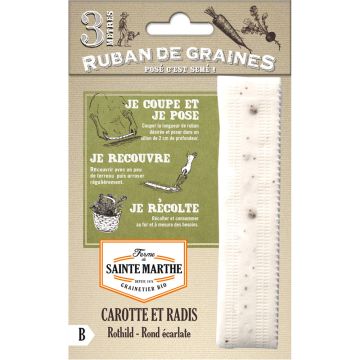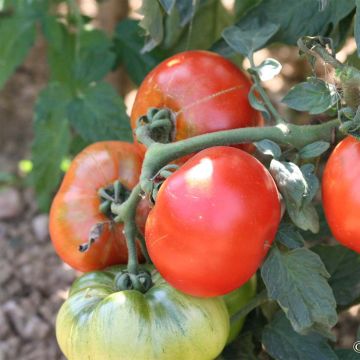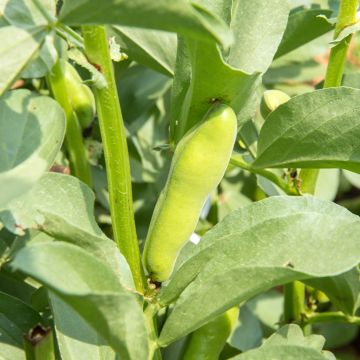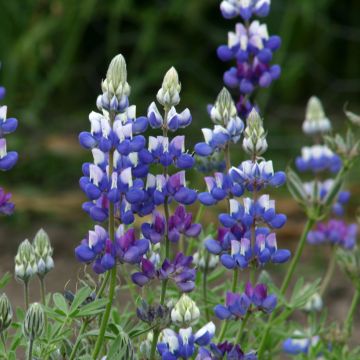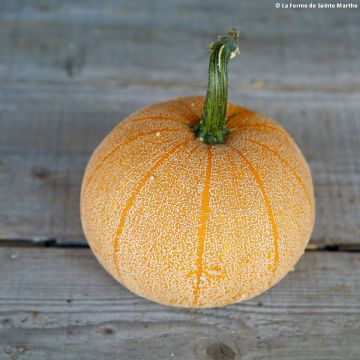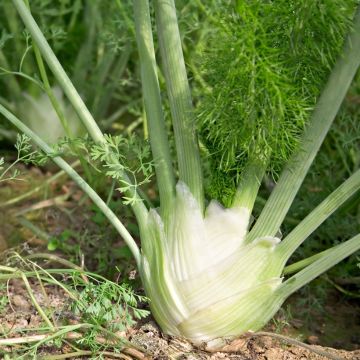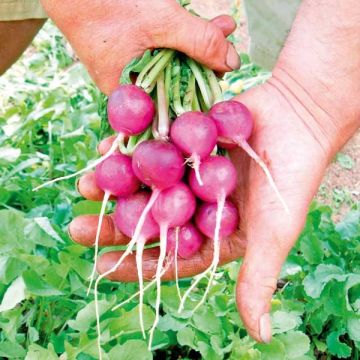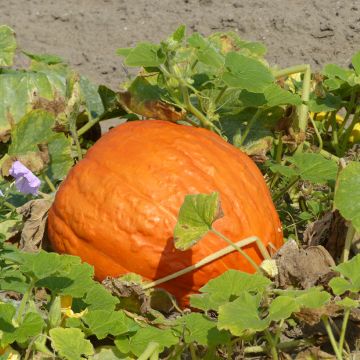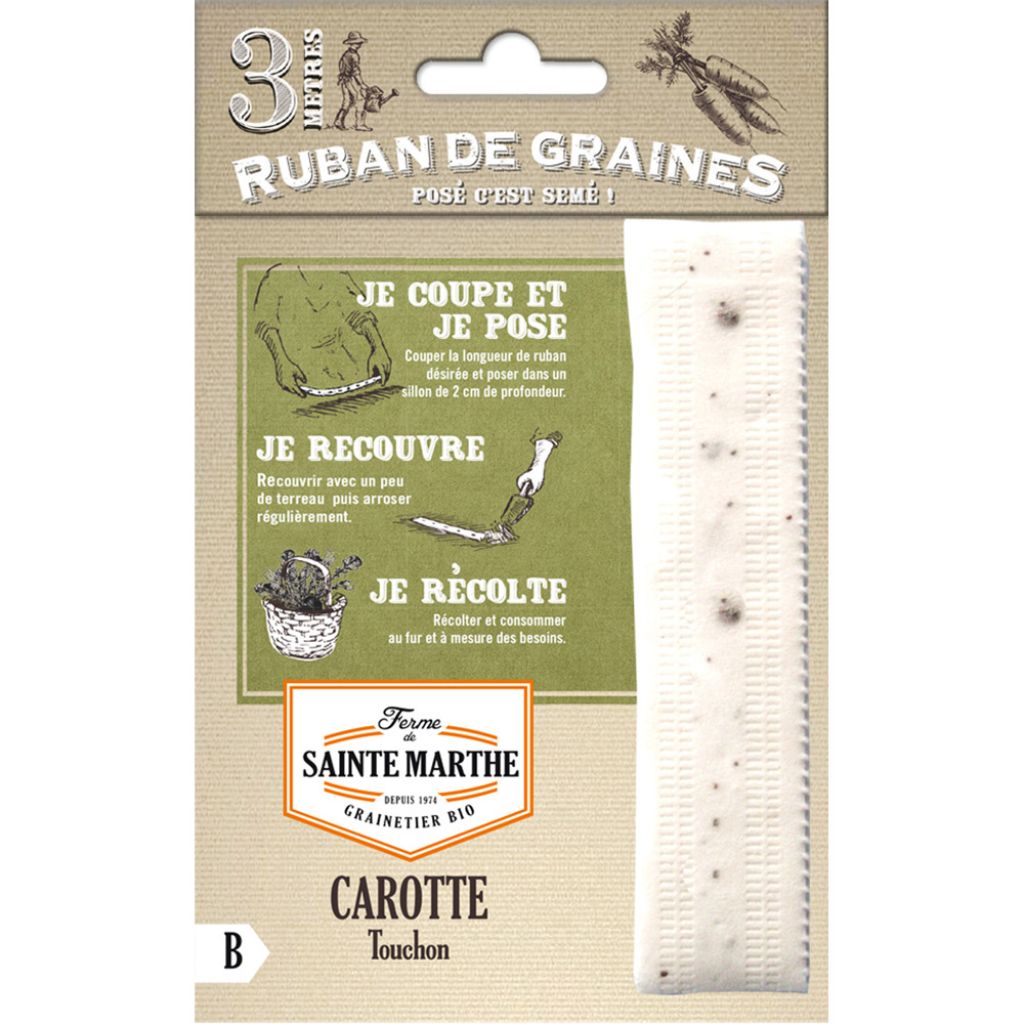

Carrot Touchon Ribbon Seeds - Ferme de Sainte Marthe seeds
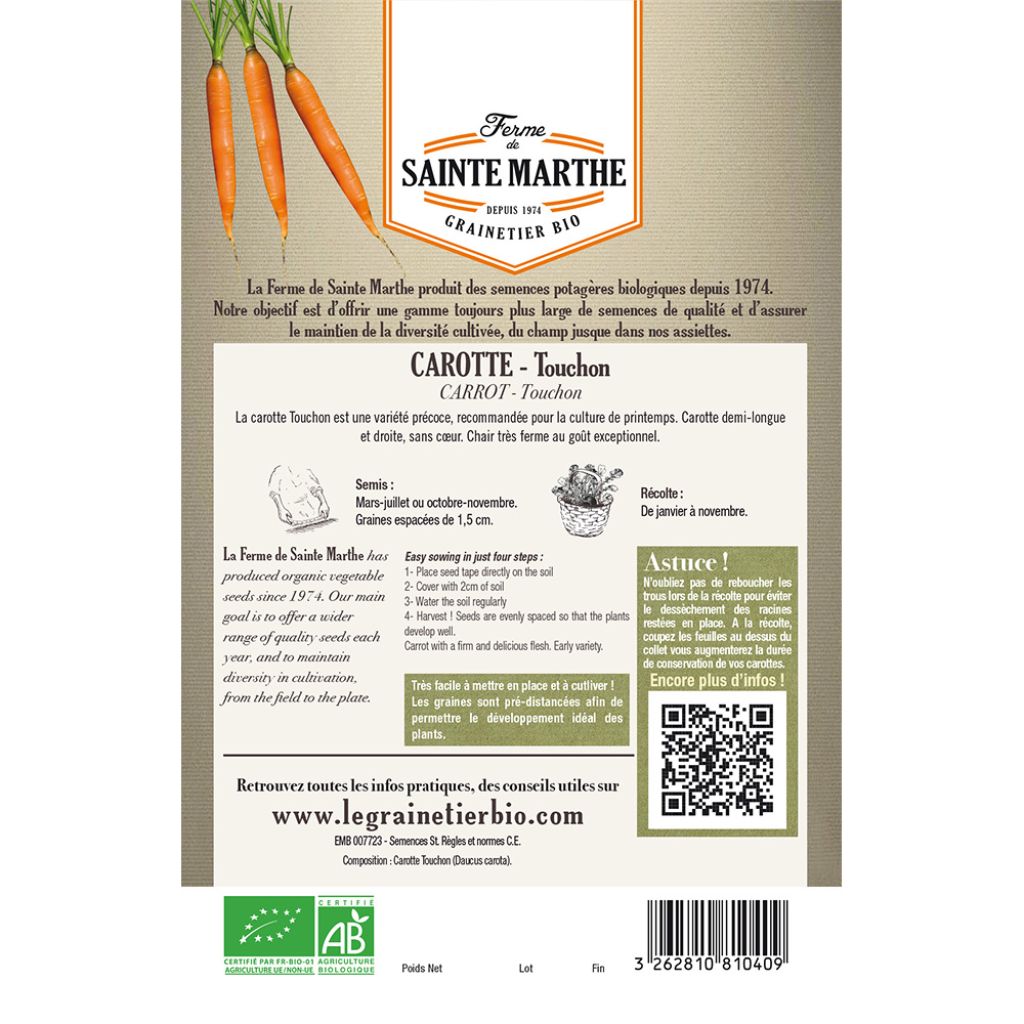

Carrot Touchon Ribbon Seeds - Ferme de Sainte Marthe seeds
Carrot Touchon Ribbon Seeds - Ferme de Sainte Marthe seeds
Daucus carota Touchon
Carrot
This item cannot be shipped to the selected country
Dispatch by letter from €3.90
More information
Schedule delivery date,
and select date in basket
This plant carries a 6 months recovery warranty
More information
We guarantee the quality of our plants for a full growing cycle, and will replace at our expense any plant that fails to recover under normal climatic and planting conditions.
Seed-only orders are dispatched by sealed envelope. The delivery charge for seed-only orders is €3.90.
Description
'Touchon' is a popular, excellent quality French heirloom. This high-yielding Nantes type variety produces half-long, straight, coreless roots with rounded tips. The firm, crisp, bright orange flesh has excellent flavour. Sow this early season to maincrop carrot under cloches in February-March or outdoors from April to June. Harvest from late May to November. Certified organic seed tape.
Organic Seed Tape: the pre-distanced seeds are placed between two fine layers of biodegradable fibres. Easy-to-sow and practical. No thinning required!
The carrot is a herbaceous, biennial root vegetable grown as an annual, belonging to the Apiaceae family. It is cultivated for its fleshy, edible taproot. Carrot roots are generally orange and contain high quantities of carotene. Carrots plants average 30 cm in height. They can be grown in most soil types, but best results will be achieved in rich, light, deep soil. It is essential to prepare the seed bed properly beforehand: dig over thoroughly in the autumn, remove stones and amend with 2-3 kg of well decomposed manure or compost. A fortnight before sowing, break up the soil with a rake and add slow-release fertilizer.
Harvesting: harvest maincrop carrots as and when required. Dig up the roots carefully with a garden fork. Damaged carrots will not store well. Yields depend on the variety and the type of crop. As a guideline, expect between 1 and 1.5 kg/m² for an early crop; about 3 kg/m² for a maincrop of stump-rooted carrots and up to 5 kg for a late crop of long-rooted carrots.
Storage: carrots can be left in place until you are ready to harvest them. However, this method monopolises precious growing space; moreover, the crop will need to be protected from winter frost damage under a good layer of mulch. Indoor storage is an excellent long term option. Trim the leaves just above the root collar. In a frost-free and well-ventilated place, lay out the roots on a bed of damp sand. Cover them with about 2 cm of sand, top with another layer of carrots and so on...
Good to know: Sow radishes and carrots simultaneously in the same row to space out the seeds naturally and limit thinning. Radishes are harvested first, loosening the soil and leaving room for the carrots to grow. Planting leeks next to carrots helps both crops by repelling carrot flies, onion flies and leek moths.
NB. Organic seeds (in French "AB" for "Agriculture Biologique") are produced from plants that aren't treated with phytosanitary products (insecticides, weed killers). The seeds do not undergo post-harvest treatment. They carry the AB label and are approved by Ecocert, an independent structure.
Report an error about the product description
Harvest
Plant habit
Foliage
Botanical data
Daucus
carota
Touchon
Apiaceae
Carrot
Cultivar or hybrid
Annual
Other Carrot seeds
Planting and care
HOW TO USE SEED TAPE:
Cut the seed tape to required length. Place in loose, well prepared soil, in rows about 2 cm deep. Cover lightly with soil and water. Keep moist until germination (generally 10 to 15 days).
Seedlings
Care
Intended location
This item has not been reviewed yet - be the first to leave a review about it.
Vegetable seeds
Haven't found what you were looking for?
Hardiness is the lowest winter temperature a plant can endure without suffering serious damage or even dying. However, hardiness is affected by location (a sheltered area, such as a patio), protection (winter cover) and soil type (hardiness is improved by well-drained soil).

Photo Sharing Terms & Conditions
In order to encourage gardeners to interact and share their experiences, Promesse de fleurs offers various media enabling content to be uploaded onto its Site - in particular via the ‘Photo sharing’ module.
The User agrees to refrain from:
- Posting any content that is illegal, prejudicial, insulting, racist, inciteful to hatred, revisionist, contrary to public decency, that infringes on privacy or on the privacy rights of third parties, in particular the publicity rights of persons and goods, intellectual property rights, or the right to privacy.
- Submitting content on behalf of a third party;
- Impersonate the identity of a third party and/or publish any personal information about a third party;
In general, the User undertakes to refrain from any unethical behaviour.
All Content (in particular text, comments, files, images, photos, videos, creative works, etc.), which may be subject to property or intellectual property rights, image or other private rights, shall remain the property of the User, subject to the limited rights granted by the terms of the licence granted by Promesse de fleurs as stated below. Users are at liberty to publish or not to publish such Content on the Site, notably via the ‘Photo Sharing’ facility, and accept that this Content shall be made public and freely accessible, notably on the Internet.
Users further acknowledge, undertake to have ,and guarantee that they hold all necessary rights and permissions to publish such material on the Site, in particular with regard to the legislation in force pertaining to any privacy, property, intellectual property, image, or contractual rights, or rights of any other nature. By publishing such Content on the Site, Users acknowledge accepting full liability as publishers of the Content within the meaning of the law, and grant Promesse de fleurs, free of charge, an inclusive, worldwide licence for the said Content for the entire duration of its publication, including all reproduction, representation, up/downloading, displaying, performing, transmission, and storage rights.
Users also grant permission for their name to be linked to the Content and accept that this link may not always be made available.
By engaging in posting material, Users consent to their Content becoming automatically accessible on the Internet, in particular on other sites and/or blogs and/or web pages of the Promesse de fleurs site, including in particular social pages and the Promesse de fleurs catalogue.
Users may secure the removal of entrusted content free of charge by issuing a simple request via our contact form.
The flowering period indicated on our website applies to countries and regions located in USDA zone 8 (France, the United Kingdom, Ireland, the Netherlands, etc.)
It will vary according to where you live:
- In zones 9 to 10 (Italy, Spain, Greece, etc.), flowering will occur about 2 to 4 weeks earlier.
- In zones 6 to 7 (Germany, Poland, Slovenia, and lower mountainous regions), flowering will be delayed by 2 to 3 weeks.
- In zone 5 (Central Europe, Scandinavia), blooming will be delayed by 3 to 5 weeks.
In temperate climates, pruning of spring-flowering shrubs (forsythia, spireas, etc.) should be done just after flowering.
Pruning of summer-flowering shrubs (Indian Lilac, Perovskia, etc.) can be done in winter or spring.
In cold regions as well as with frost-sensitive plants, avoid pruning too early when severe frosts may still occur.
The planting period indicated on our website applies to countries and regions located in USDA zone 8 (France, United Kingdom, Ireland, Netherlands).
It will vary according to where you live:
- In Mediterranean zones (Marseille, Madrid, Milan, etc.), autumn and winter are the best planting periods.
- In continental zones (Strasbourg, Munich, Vienna, etc.), delay planting by 2 to 3 weeks in spring and bring it forward by 2 to 4 weeks in autumn.
- In mountainous regions (the Alps, Pyrenees, Carpathians, etc.), it is best to plant in late spring (May-June) or late summer (August-September).
The harvesting period indicated on our website applies to countries and regions in USDA zone 8 (France, England, Ireland, the Netherlands).
In colder areas (Scandinavia, Poland, Austria...) fruit and vegetable harvests are likely to be delayed by 3-4 weeks.
In warmer areas (Italy, Spain, Greece, etc.), harvesting will probably take place earlier, depending on weather conditions.
The sowing periods indicated on our website apply to countries and regions within USDA Zone 8 (France, UK, Ireland, Netherlands).
In colder areas (Scandinavia, Poland, Austria...), delay any outdoor sowing by 3-4 weeks, or sow under glass.
In warmer climes (Italy, Spain, Greece, etc.), bring outdoor sowing forward by a few weeks.

































